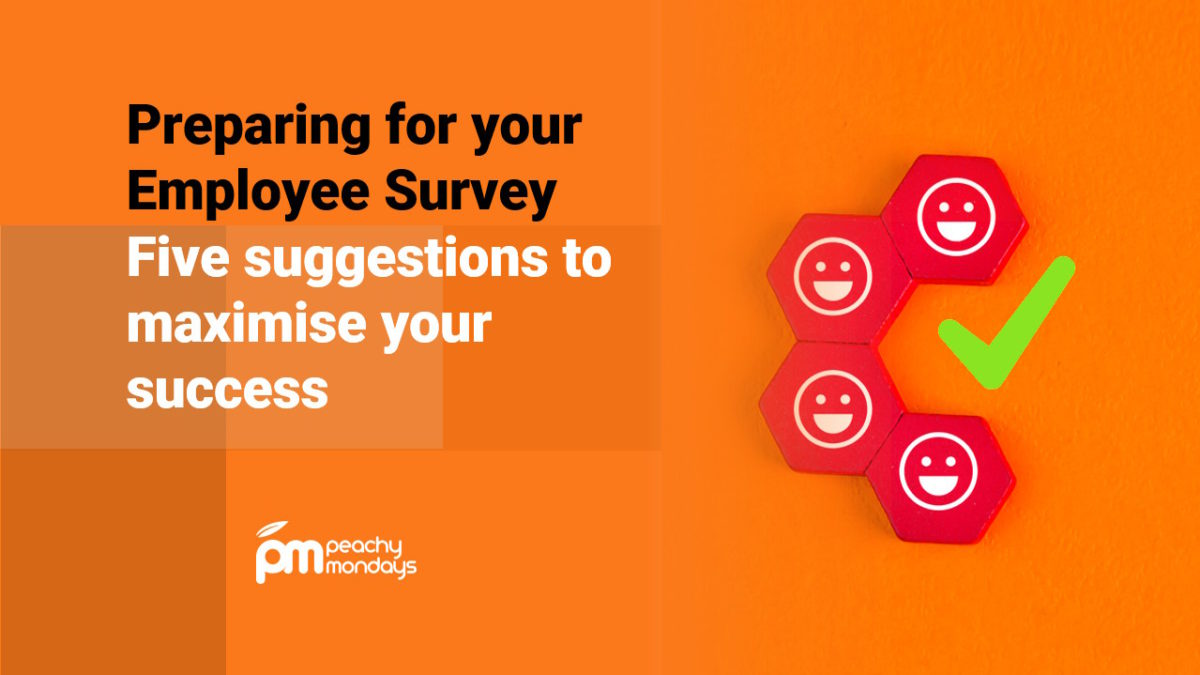Preparing for your Employee Survey: 5 suggestions to maximise your success
We hate to wish the summer away, but Autumn is usually a peak time for the annual Employee Opinion Survey. It’s a crucial opportunity to gather valuable insights and drive meaningful change within your organisation.
As you begin your preparation, you may find yourself in one of the following scenarios
- Overthinking: You analysed the results of your last survey, but things changed or were delayed so the cascade maybe took a bit too long, and little action was taken.
- Uncoordinated: You analysed and cascaded the results, and there was an excited flurry of activity on action planning, but it’s died down and you don’t actually know what was done and if it was effective
- Disconnected: You’ve taken some really important actions at an organisation wide level, but people don’t really recognise that it was because of their feedback.
If these any of these sounds familiar, read on to get some suggestions about what you can do between now and survey launch.
Reflect on past feedback and communicate clearly
Think of your survey as a conversation with your team. Just as you would reflect on previous discussions to make future ones more productive, reviewing past survey feedback can set a strong foundation. Take a moment to evaluate the changes implemented since the last survey. This reflection is not just about ticking off boxes; it’s about understanding the impact of those actions and areas that still need attention.
Transparency builds trust. Share the progress and challenges openly with your employees. This can be done through a company-wide email, an engaging internal newsletter, or a dedicated section on your intranet. Highlight successes and be honest about ongoing challenges. This openness shows your team that their feedback matters and drives real change.
Example: “Last year, you highlighted the need for better inter-departmental communication. In response, we launched monthly inter-departmental meetings and introduced a shared project management tool. We’re still refining these processes to better meet your needs.”
Involve your employees now
Your employees are your greatest resource. Involve key groups such as department heads, team leaders, employee resource groups (ERGs) or Employee-Led Networks (ELNs) in the survey process. Their unique perspectives can help ensure the survey questions are relevant and comprehensive.
In large organisations a network of champions may also be beneficial. These are individuals who volunteer to support their teams or department heads with everything survey related – helping to share messages and encourage action plans. It’s often a great skill building experience for someone wanting to develop line manager skills, but it also means accountability for the survey is shared, not ‘just another HR initiative’.
Engage these groups in focus sessions or planning committees. Their first-hand experiences and deep understanding of their teams will help craft questions that resonate and capture the true sentiments of your workforce.
Example: One solution we’ve explored with several clients is an online collaborative event (we’ve used EasyRetro in the past, but any online collaboration platform can work) to gather feedback rapidly and in an engaging way. We think asking these three questions in advance of your next survey can really help pave the way to success:
- What actions did we take on the back of the last survey that really worked?
- What actions did we take that didn’t really impact?
- What would you really like to be asked about in the next survey?
Using something like EasyRetro allows anyone to anonymously leave their feedback, allows people to comment on each others feedback and ‘upvote’ the most popular suggestions – making it accessible for everyone.
Upskill your people
Although survey platforms like Peachy Mondays make it easy to understand results in real time, and provide some great hints and tips for action, turning insight into action and sticking to them is actually quite hard. We probably know this best from our personal experience with our new year’s resolutions!
It’s a skill which is applicable to many situations, not just survey results and so by training on ‘insights, root causes and actions’ you are actually building a critical skill set that can help with continuous improvement, innovation and risk management.
You could choose to upskill managers, champions, HR colleagues or a combination of all three in tools like the 5 Whys, Fishbone Analysis, Pareto Analysis or using behavioural science models like COM-B and EAST™.
Providing this upskilling shows you’re serious about how the survey results can be used to drive continuous improvement of the employee experience.
Example: “We’d like to invite you to a masterclass on root cause analysis. This will be really helpful for helping you drive continuous improvement, and for action planning on the back of the employee survey. Please bring along some real life examples of issues you face for us to use some simple but effective tools on”
Encourage experimentation
In the spirit of continuous improvement, encourage a culture of experimentation. Trying new initiatives based on survey feedback, even if they don’t succeed, is an opportunity to learn and grow. Emphasize that both successes and failures provide valuable insights.
When an initiative doesn’t go as planned, analyse what went wrong and why. Share these learnings with your team to collectively understand the challenges and consider different approaches. This process can often lead to more innovative and effective solutions.
Example: “We experimented with a new project management tool based on your feedback. While it didn’t meet our expectations, we learned that a simpler, more integrated solution would be more effective. Your ongoing feedback helps us find better ways to support your work.”
Get in touch with us to find out how Peachy Mondays can help you understand the needs of your employees and prioritise what’s most important.
Related Posts
Categories
- Case Study (13)
- Change and transformation (21)
- Connectedness (4)
- Culture (17)
- Design (10)
- Diversity and Inclusion (1)
- Effectiveness (16)
- Employee engagement (60)
- Employee experience (43)
- Employee Feedback (51)
- Employee Wellbeing (1)
- Events (10)
- Financial Wellbeing (1)
- Happiness (4)
- Internal Communications (10)
- News (24)
- Onboarding (1)
- Organisational Effectiveness (18)
- Uncategorized (3)




